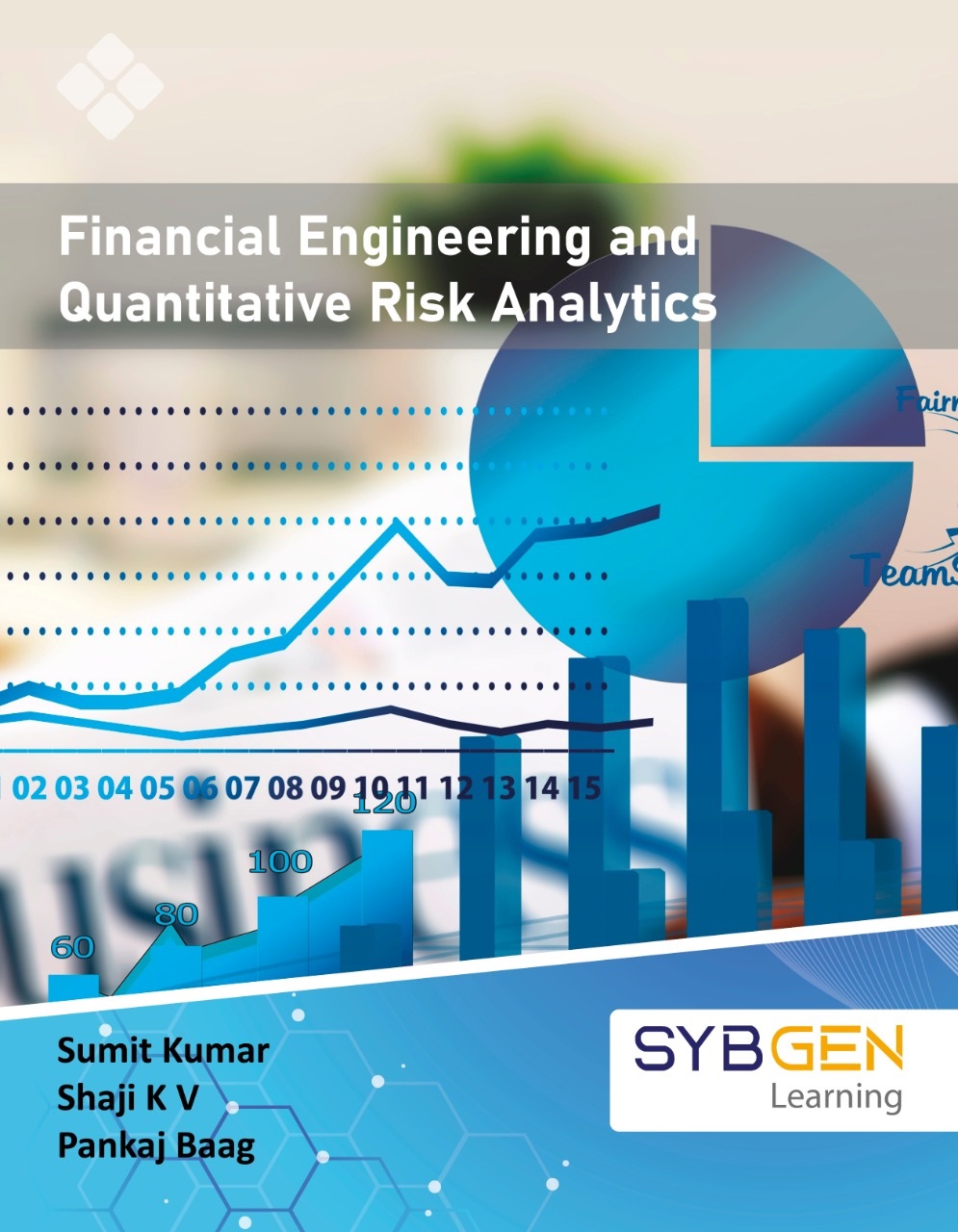Description
Chapter 1 introduces the reader to the fundamental concept of Risk. It explains in detail the type of risks an investment portfolio or fund is exposed to. It talks about the importance of Risk Management and speaks about the characteristics of a good risk culture within and outside an organization.
Chapter 2 elaborates on the measurement of Risk and introduces the concept of Value at Risk (VaR) to the reader. We have taken couple of examples from financial industry to allude the importance of Risk measurement and how VaR can help us out for that purpose. The chapter extends to explain the types of VaR that are popular among industry practitioners.
Chapter 3 provides a detailed introduction to Credit Risk and discusses the roles and importance of managing credit risk in the overall risk management framework. The chapter goes into the details of actuarial and statistical model of measurement of credit risk of an investment portfolio and discusses the implications.
Chapter 4 further extends the concept learnt in chapter 3 and talks about the model and methodologies around computation of default probability. Merton’s model of computation of default probability is explained in detail and Black Scholes framework has also been provided for background as Merton model is based on Black-Sholes model.
Chapter 5 covers the regulatory aspects of Risk management. It goes into the details of what is known as the pillar of risk management – The Basel Risk Management framework. It starts with the insolvency risk and gives a background of Basel 1, Basel 2 and Basel 3 accord. It explains the concept of capital and capital adequacy based on Basel recommendations.
Chapter 6 goes into the details of Credit Default swap or CDS. CDS is one of the most widely used credit risk mitigation instrument. CDS pricing and usage of CDS in risk management is one of the most important aspects to make portfolio immune to credit risk.
Chapter 7 is all about managing derivative risk using option Greeks. This chapter introduces the reader to the most common option greeks like Delta, Vega, Gamma, Theta and Rho and how an investor can use the concept of these first and second order risk sensitivities to manage their cash and derivative portfolio efficiently.
Chapter 8 is natural extension of chapter 7. In this chapter, the reader would get to understand the concept of volatility smile. As observed in the market, volatility is not flat across the strikes, but it exhibits a smile towards both ends of the moneyness. This chapter explains the concept of volatility smile, and risks it introduces for the portfolio.
Chapter 9 covers the correlation aspect of the default risk. It explains to the reader how to model the joint default probabilities when the marginal default probabilities are given. It is an important concept to model the credit risk of a basket of corporate bonds, book of loans or a portfolio of Credit Default Swaps (CDS).
Chapter 10 is about the concept of first and second order risk to a bond or a bond / Fixed Income portfolio. It covers the topics of Duration and convexity in details. It also explains how to apply these to Asset- liability management.
Chapter 11 explains the risk arising due foreign exchange rate movement. This is important for those portfolios which are exposed to foreign currency risk, for example an FX Liability, a portfolio of Foreign bonds, stocks, or loans etc. This chapter discusses a few FX instruments applied for hedging purposes.
Chapter 12 goes into the detail of modelling volatility. It discusses a set of models to predict/ simulate volatility in future. This is an important chapter for understanding overall risk management and is critical to VaR modelling.
Chapter 13 deals with most recent changes happening in the financial world. It elaborates on how risk measurement, management and reporting has changed. You might be aware that Libor index will cease to exist soon and will be replaced with SOFR (Secured Overnight funding rate). This chapter explains how the risk will be rationalized once again when we move from Libor to pure SOFR world.
Overall, the above chapters create a valuable resource for understanding the concepts of financial risk management, from both students’ and industry practitioners’ perspectives. It is strongly recommended that students try and work out the chapter end exercises and go over the examples within the chapters for a strong understanding of the subject matter. The order in which chapters are organized, creates a natural learning flow. We are sure the reader would find the learning process exhilarating and enriching. We wish all our readers success! Happy reading!










